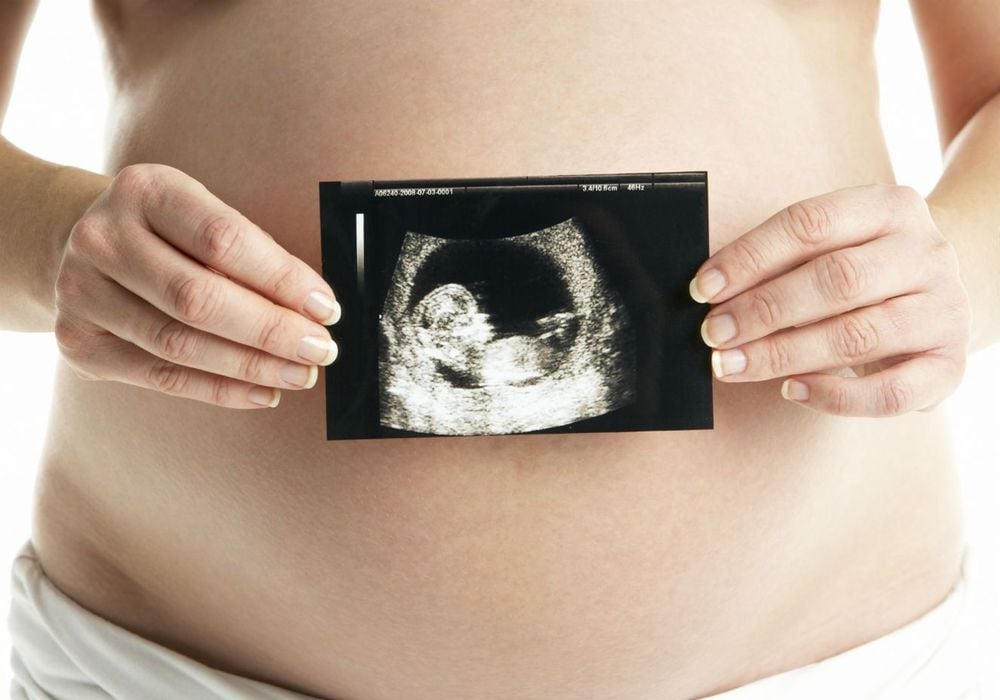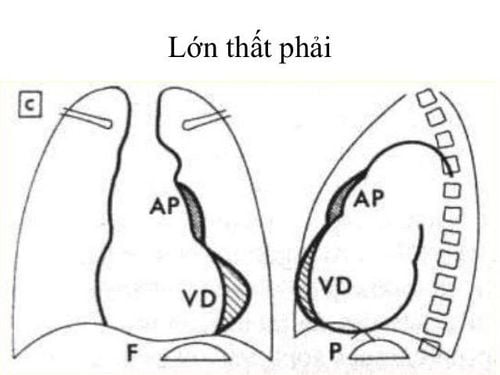This is an automatically translated article.
The article was consulted with Specialist Doctor I Le Hong Lien - Department of Obstetrics and Gynecology - Vinmec Central Park International General Hospital.Fetal echocardiography plays an important role in the diagnosis and detection of congenital heart defects in the fetus. Postpartum coarctation of the aorta is one of the congenital heart diseases that need to be diagnosed early in the fetal period to improve survival prognosis.
1. Coarctation of the aorta - Congenital heart defects in the fetus
Coarctation of the aorta is a congenital heart defect in the fetus, which is a narrowing of the superior descending aorta near the attachment of the arterial ligaments.Coarctation of the aorta is a complex lesion that can be associated with other congenital heart defects such as aortic arch hypoplasia, ventricular septal defect, ductus arteriosus, bivalve aortic valve and complex heart diseases. other miscellaneous. Coarctation of the aorta can also be seen in patients with Turner syndrome.
The incidence of coarctation of the aorta is about 4/10,000 children, the disease ranks 7th and accounts for about 4-6% of congenital heart diseases. Girls and boys have a prevalence of about 1.7:1.
Up to 60 - 80% of children with postpartum coarctation are not diagnosed before birth, and about 64% of children with ischemic stenosis have symptoms after birth, the rest are clinical manifestations in adulthood. go up.
There are 3 main factors that are thought to cause coarctation of the aorta, including: decreased blood flow to the aorta (according to RUDOLPH kinetic theory), ectopic displacement of ductus arteriosus (according to SKODA mechanical theory) and by genes.
The average life expectancy of people with coarctation of the aorta after birth is about 31 years. The cause of death is usually aortic rupture, heart failure, infective endocarditis, intracranial hemorrhage, ...
Illness if not diagnosed before birth and at birth, after birth if the child has Sudden cardiovascular collapse can face a high risk of death.
2. The role of fetal echocardiography in the diagnosis of postpartum coarctation of the aorta
Coarctation of the aorta is difficult to detect in the fetal stage. However, if diagnosed and detected before birth, it improves survival rates as well as reduces the likelihood of other long-term illnesses.Fetal echocardiography plays an important role in the diagnosis of coarctation of the aorta, specifically:
Find and detect other combined congenital anomalies: Coarctation of the aorta is often associated with hypoplasia of the aortic arch and other birth defects. Termination of pregnancy: If severe coarctation of the aorta is detected with many associated malformations and poor postpartum prognosis, parents can choose to terminate the pregnancy. Continuation of pregnancy: Fetal echocardiography helps to monitor, evaluate and organize more thoughtful prenatal planning. Choosing a medical facility with full equipment to support cardiovascular care and a team of highly qualified doctors will promptly perform surgical treatment at birth, thereby helping to reduce the mortality rate. , increase life chances for children. Facilitating surgery: Diagnosis and detection of congenital heart disease in the fetus before birth facilitate heart surgery or cardiac catheterization for the fetus at birth. Basis for consultation: Fetal echocardiography is the basis for genetic counseling, guiding doctors to choose the right patient to perform chromosomal testing. Fetal treatment: For cases of fetal heart disease, ultrasound supports treatment in the fetal period, invasive procedures for the fetus such as blood transfusion, treatment of cardiac arrhythmias can be performed. , cardiovascular intervention, ... Psychological support: Fetal echocardiography helps parents prepare better psychologically at birth, reassures parents who have given birth to a child with congenital heart disease but have good ultrasound results for subsequent pregnancies.

3. Fetal echocardiography in predicting postpartum coarctation of the aorta
3.1 Characteristics of coarctation of the aorta on fetal echocardiography Fetal echocardiography can show features of coarctation of the aorta as follows:Right ventricular pressure is greater than left ventricle. The pulmonary artery is larger than the aorta. Aortic arch hypoplasia on 3-vessel and longitudinal aortic views. Isthmus aortic hypoplasia. In addition, some of the following features suggest a diagnosis of coarctation of the aorta on ultrasound: Fetal heart rate :
Bilateral aortic valve Existence of left superior vena cava Small aorta Mitral stenosis Right ventricular dilatation 3.2 Difficulty in fetal echocardiography predicting postpartum coarctation of the aortic stenosis It is difficult to detect the coarctation of the aorta on ultrasound because of the absence of eddy currents and the ductus arteriosus. Depending on the unit performing the ultrasound, where there is no function to perform routine examination of the great arteries, the detection of ventricular imbalance may be missed. Other associated cardiac abnormalities or chromosomal abnormalities. 3.3 Congenital heart abnormalities in the fetus with coarctation of the aorta In addition, there are a number of other non-cardiac abnormalities or chromosomal abnormalities that can be detected during fetal echocardiography such as:
Water cyst Diaphragmatic hernia Digestive, urinary, and neurological abnormalities central Chromosome abnormalities T13, T18, T2, XO.

4. Treatment, care and follow-up of children with coarctation of the aorta after birth
4.1 Postpartum coarctal stenosis detected in the fetal stage When fetal echocardiography suspects or detects that the child has severe coarctation of the aorta or is accompanied by hypoplasia of the aortic arch, the child should be treated and cared for. Early care and monitoring:Actively organize and plan the birth and care and monitor the baby after birth at the pediatric cardiology department. Immediately after birth, infusion of Prostaglandin (PG) to the infant to maintain patency of the ductus arteriosus. Echocardiography for babies early, if it is determined that the child has coarctation of the aorta after birth, it is necessary to continue maintaining PG infusion until the child is operated on. In the case of unidentified children with coarctation of the aorta with a lower probability of suspicion, there is no need for immediate PG infusion after birth. Re-ultrasound and check that there is no coarctation of the aorta can allow the ductus to close naturally, and conduct echocardiography every day or every other day. Note, until the ductus arteriosus is completely closed, it is necessary to regularly monitor the blood pressure of the extremities and the inguinal pulse. In case the child does not have coarctation of the aorta after birth, it is necessary to be re-examined when the child is 4-6 weeks old and 6 months old to prevent late onset of coarctation. 4.2 Postpartum coarctal stenosis in infants In infants and young children, postpartum coarctation is diagnosed based on clinical manifestations such as:
Upper extremity hypertension Loss of inguinal and femoral pulse Yin blow Heart failure When postpartum coarctation of the aorta causes collapse of the blood vessels in infants and young children, the child needs to be promptly hospitalized for surgery. Before surgery, it is necessary to carry out adequate resuscitation of the child with the following techniques:
Intubation, mechanical ventilation Use vasopressors Correction of severe acidosis Infusion of PG to open the ductus arteriosus 4.3 Posterior coarctation of the aorta birth in older children and adults The case of coarctation of the aorta after birth appearing late in older children, even adults, can be discovered incidentally with more dangerous manifestations.
For older children and adults, Doppler echocardiography can be difficult, instead, electrocardiogram and chest X-ray are suitable methods for diagnosis and follow-up with the following characteristics:
Electrocardiogram Cardiogram: Increased left ventricular load. X-ray: ventricular hypertrophy and dilatation of the lower left ventricle, 3-arc sign of the aortic balloon. Fetal echocardiography plays an important role in predicting postpartum coarctation of the aorta. Therefore, pregnant women must have fetal echocardiography from 18 weeks to increase the rate of early detection of congenital heart defects in the fetus.
Fetal echocardiography is a routine test for doctors to assess fetal heart status, heart rate and detect fetal heart abnormalities, such as diagnosing coarctation of the aorta. However, this diagnostic technique requires the operator to have good expertise, in-depth experience and well-trained, because there are many cases of heart defects that have been missed, losing opportunities. Therefore, pregnant women should choose reputable antenatal clinics with standard and modern ultrasound systems to have clear and true images.
Fetal echocardiography is a routine test performed at Vinmec International General Hospital. Accordingly, at Vinmec, many cases of pregnant women with fetuses with very severe heart defects have been diagnosed and detected, and at the same time, surgical intervention has been performed to treat them early from the day they are born, providing a high prognosis for survival. for many babies, bringing joy and happiness to many families.
Therefore, to ensure the health of both mother and fetus, right from the start of pregnancy, mothers can refer to the maternity package package at Vinmec International General Hospital. There is a team of specialized medical doctors who are well-trained, specialized in imaging diagnostics, capable of detecting birth defects of the fetus very early. Depending on the stage of pregnancy, pregnant women will be consulted by the doctor for appropriate fetal ultrasound to check the development status of the baby.
For more information, please contact the hospitals and clinics of Vinmec Health system nationwide.
Please dial HOTLINE for more information or register for an appointment HERE. Download MyVinmec app to make appointments faster and to manage your bookings easily.














